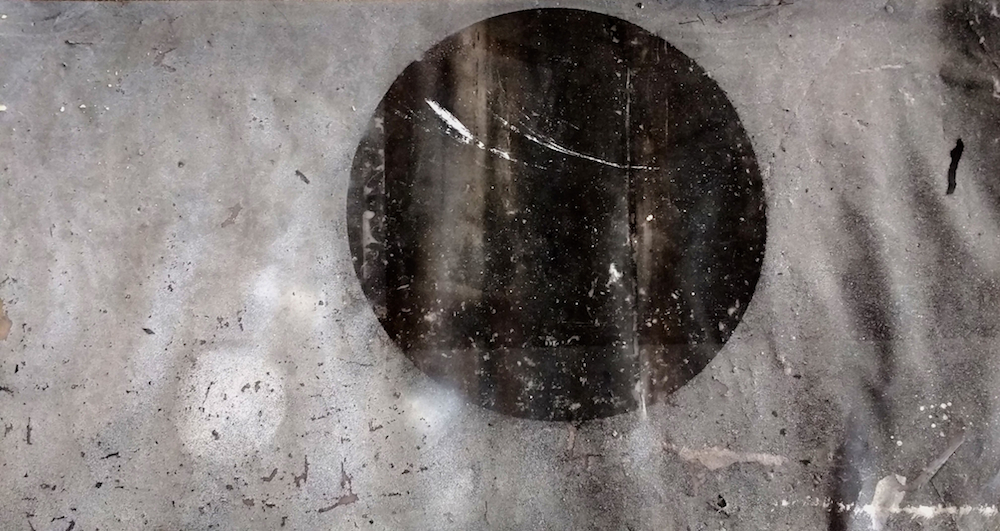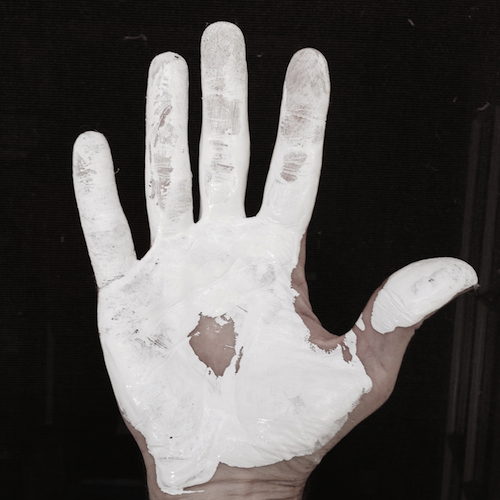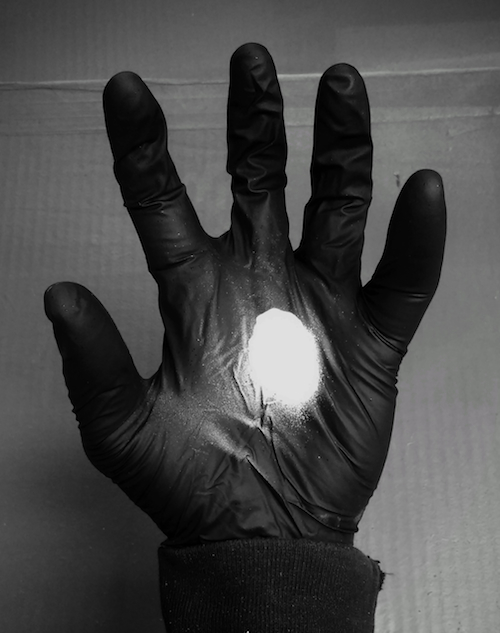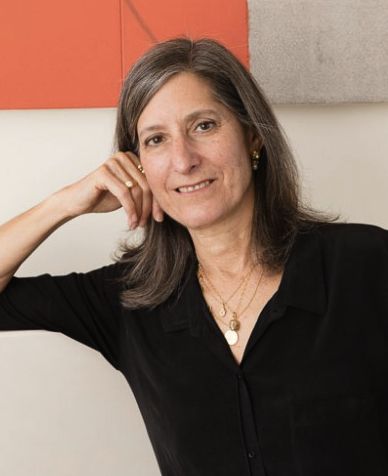Essay by Judith Hannan
Life’s Remainder Measured in Pencils

I was eight years old, curled on my bed, pressed against the wall. The specter of my inevitable death skulked in the shadows. My defense was a game of percentages. If I lived for 92 years, I still had 91 percent of my life left. My breath slowed.
For the next 25 years, fear of death tackled me while I ate breakfast, read a book, walked the dog, or sat in a meeting. I had no belief in God to catch me when I felt the abyss swirling at my feet. The Judaism I grew up with eschewed any notion of an afterlife. It was a point of pride for my rabbi to emphasize that Jews focus on the life we are living now, not some future place for which life on Earth is just a preamble.
My father, a scientist, said if there was a God, no one had proven it yet. My mother answered my question about what happens when you die by saying, “Nothing. You go in the ground, and you cease to exist.” Neither were sources of comfort.
I was in my thirties before I learned that Judaism did indeed embrace the concept of resurrection and a world to come. What a lovely idea, I thought. But I couldn’t make myself believe it.
• • •
Another strategy I tried as a child: I imagined I was only a day old, experiencing my first night of sleep, and that I was dreaming the rest of my life. When I came to the end, I would wake up for Day Two, and the cycle would repeat. Based on Gauss’s formula for adding consecutive numbers, by the time I turned 92, I would have experienced living for 1,544,726 years.*
I was a Buddhist before I even knew what one was. This strategy didn’t make it to adolescence.
I was thirty when my mother died in 1984. She was 54. Clinging to my projected lifespan of 92 years, I did the math. Sixty-seven percent of life remaining still made my death seem far away, and I felt an inkling of courage. If death was something my mother could go through, then I would be able to as well.
As if I had a choice.
At 35, with 62 percent of my life still to go, I had the first of my three children. Motherhood made me brave. I had lives to protect—beings to grow and nurture and be present for. I was freed from my calculations. Emptied of numbers, words poured in to fill the void. Writing became my way of exercising control, not over time, but within it.
In 2001, when my then-eight-year-old daughter was treated for a Ewing’s sarcoma, words, not numbers, allowed me to usher her and my family back into life. Stories forced me to notice that my life was in a state of ongoing expansion, like the universe after the big bang. I didn’t question whether there would be an end to the ballooning of my world.
• • •
Pencils are my third eye, directing me outward and within. They litter my house. They can be found in the pages of my books, under couch cushions, on my dresser, and on the countertop by the phone. A few lurk in the bottom of pocketbooks and bags.
I keep boxes of mechanical pencils in the kitchen. I pull a new one from this collection at least once a week, when all the other pencils in the house seem to be off playing hide-and-seek and I’m in no mood to be It. And there are the fistfuls of pencils my children returned home with after college, which I gathered like a child grabbing candy from a burst piñata.
I’m 64 now. I have over a hundred pencils. As if by reflex, I run the numbers. Logic tells me I will never need to buy another pencil again.
 I wait for the old terror. It’s there but is mitigated by melancholy, a feeling with which I have a friendlier relationship. Even so, I’m finished with sentimentality for the past—of seeing my grown children and pining for the time when they were young, of hearing Don McLean’s “American Pie” on the radio and reliving the struggle of my college years, of reading old letters as a form of picking the scab off buried memories.
I wait for the old terror. It’s there but is mitigated by melancholy, a feeling with which I have a friendlier relationship. Even so, I’m finished with sentimentality for the past—of seeing my grown children and pining for the time when they were young, of hearing Don McLean’s “American Pie” on the radio and reliving the struggle of my college years, of reading old letters as a form of picking the scab off buried memories.
Instead, I ache for all that will someday occur without me, for all that I’ll never know and experience. I ache because, after writing the story of my mother’s death over and over, when I made myself the center of grief and loss, I finally recognized that mourning is not only for those who remain among the living. As my own death comes near enough to be visible, I’ll be among my first mourners. I wonder if I’m still brave.
• • •
When my father was not much older than I am now, he told me that fear of death diminishes with age. Twenty years later, during his final days, this was not what I observed. While shopping for my father’s coffin, I waited to fall into the quicksand. Instead, when I got home, I wrote about the three rooms of caskets on display in the funeral home and the absurdity of so many choices.
Thoughts about my death don’t hijack me anymore, although I can still capsize into the swamp of fear if I dwell too long on nonexistence. But with the pencil I now hold, I’ve found the courage to declare what I want upon my death, which is to be buried in the traditional Jewish manner—simple pine box, no embalming, in a white shroud.
Even that seems like too much trouble to travel to nowhere.
In a 2016 talk at Congregation Romemu in New York City, Kabbalah scholar Daniel Matt spoke about gravity as “everything yearning to return to oneness,” while dark energy is what keeps the universe expanding. Matt’s talk was part of a celebration of the second edition of his 1996 book God and the Big Bang: Discovering the Harmony Between Science and Spirituality, “Right now,” he said, “the scientific evidence is that dark energy is more powerful than gravity.”
 I don’t know what the human equivalent of dark energy is. Perhaps it’s the spirit, which is also unseen, but exerts a powerful influence on the person within. If the spirit contracts as it ages, it’s not because it has lost energy; it becomes denser, its inactive ingredients boiled away like excess water.
I don’t know what the human equivalent of dark energy is. Perhaps it’s the spirit, which is also unseen, but exerts a powerful influence on the person within. If the spirit contracts as it ages, it’s not because it has lost energy; it becomes denser, its inactive ingredients boiled away like excess water.
Writing bravely will require that I not flinch at words like loss and limitation. It will require that I grow up yet again—as I did from adolescence to young adulthood. For this final phase—senior adulthood to death—I still don’t believe in God or a next chapter called “From Death to Beyond.”
The finiteness of time could release in me new energy, the way the approaching end of a vacation makes you swim in the ocean longer or ski until the lifts close. But I can also imagine being stingy with my words. If pencils are going to be how I measure time, the longer they last, the more years I have left. Only a child could believe such a magical equation—the same child who used to lie in bed at night, calculating percentages based on a made-up number now only 28 years away.
* To calculate the number of years left if you dream a new life every night, use this formula for adding consecutive numbers:
n x (n+1) ÷ 2
where n equals the number of days in a projected lifespan of 92 years (33,580)
33,580 x 33,581 ÷ 2 = 563,824,990 days
563,824,990 ÷ 365 = 1,544,726 years
Publishing Information
- “Dr. Daniel Matt at Romemu: From Kabbalah to the Big Bang: Ancient Wisdom and Contemporary Spirituality” (based on his book God and the Big Bang), November 6, 2016.
- God and the Big Bang: Discovering Harmony Between Science and Spirituality by Daniel C. Matt, originally published in 1996 by HarperCollins (Jewish Lights Publishing, 2016, second edition).
Art Information
- "Visitant" © Grady Kane-Horrigan; used with permission.
- "How All Things Flash!" © Grady Kane-Horrigan; used with permission.
- "How All Things Flare!"© Grady Kane-Horrigan; used with permission.
 Judith Hannan is an essayist and the author of The Write Prescription and Motherhood Exaggerated. She leads workshops for those affected by illness and for high-risk populations. She’s a public speaker and panelist on narrative medicine/narrative healing. She mentors cancer patients and is a recipient of a 2015 Humanism in Medicine Award from the Arnold P. Gold Foundation.
Judith Hannan is an essayist and the author of The Write Prescription and Motherhood Exaggerated. She leads workshops for those affected by illness and for high-risk populations. She’s a public speaker and panelist on narrative medicine/narrative healing. She mentors cancer patients and is a recipient of a 2015 Humanism in Medicine Award from the Arnold P. Gold Foundation.
For more information, visit Judith Hannan’s website or follow her on Twitter @judithhannan.
